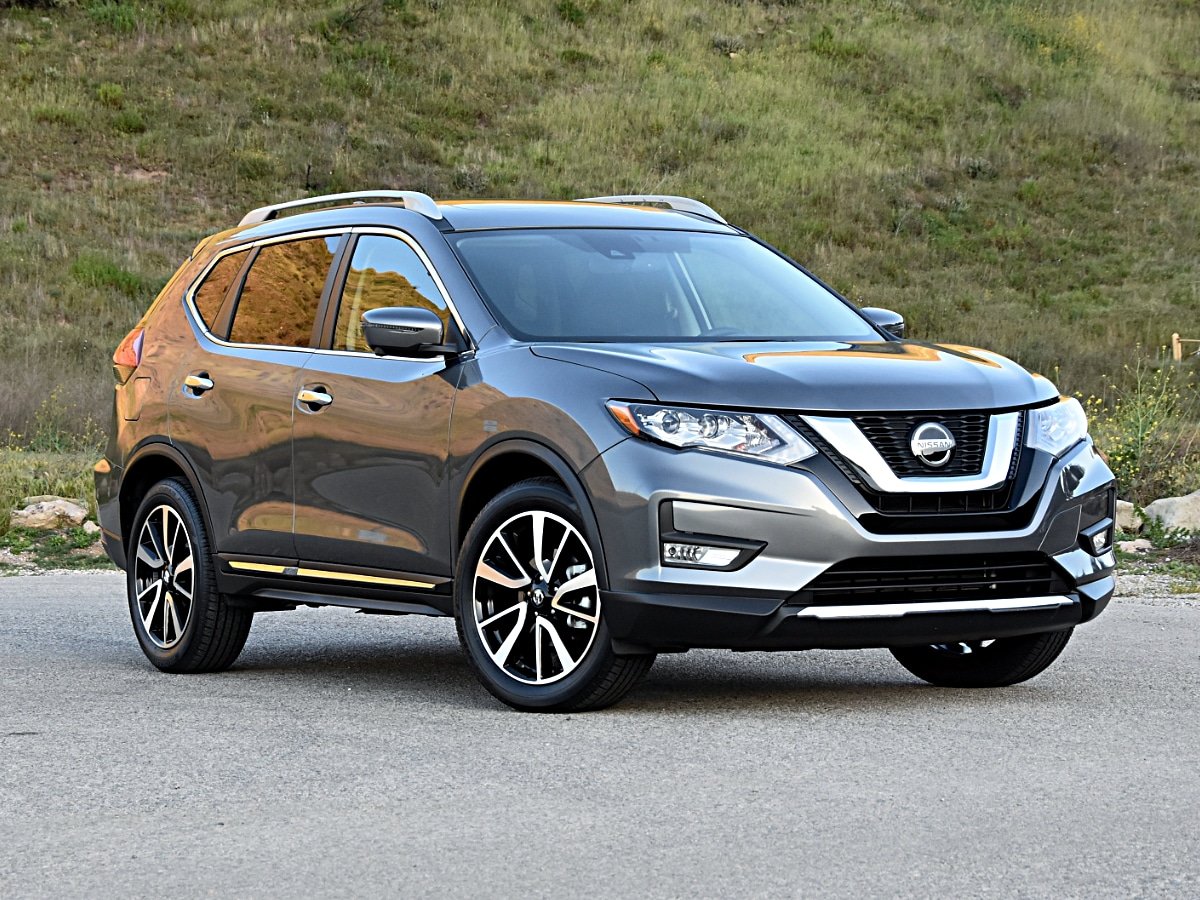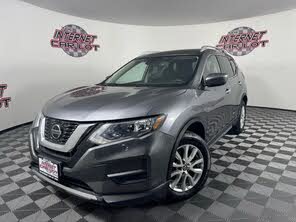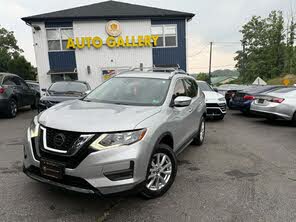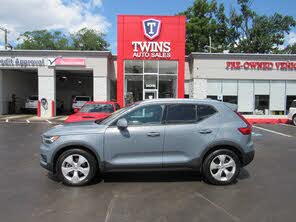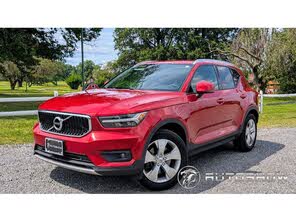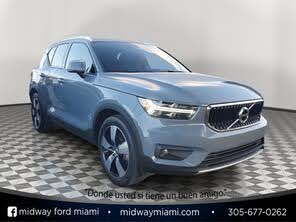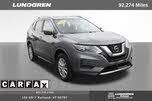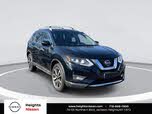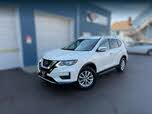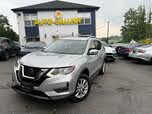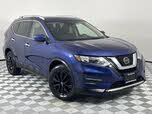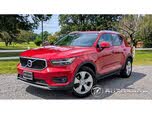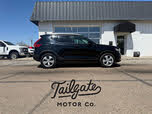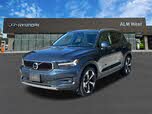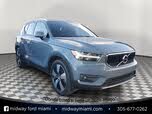2020 Nissan Rogue vs 2021 Volvo XC40
Overview | |
MSRP$25,490 | MSRP$33,700 |
Listings1109 | Listings166 |
Ratings & Reviews | |
User Reviews | User Reviews |
Expert reviews6.0 out of 10 | Expert reviews8.0 out of 10 |
Pros
Cons
| Pros
Cons
|
2020 Nissan Rogue Reviews SummaryNissan hasn’t redesigned the Rogue since 2014, but an all-new version of this SUV is coming for the 2021 model year. In the meantime, dealers will be eager to sell remaining stocks of the outgoing 2020 Nissan Rogue, and the deals on these new cars ought to be mighty juicy. Should you bite? Should you wait? Or should you shop for something else? The answers to these questions depend on who you are and what you value in a compact crossover SUV. | |
2021 Volvo XC40 Reviews SummaryIntroduced for the 2019 model year, the Volvo XC40 enters 2021 with one major change—the addition of an all-electric powertrain option. The 2021 Volvo XC40 Recharge is the Swedish automaker’s first mass-market electric vehicle, in fact. The Recharge will be sold alongside gasoline versions of the XC40, which carry over largely unchanged, and compete against small luxury crossovers like the Audi Q3, BMW X1, Mercedes-Benz GLA-Class, and Lexus UX. With its electric powertrain, the Recharge is a de facto Tesla Model Y competitor. It’s also priced similar to high-end versions of the Ford Mustang Mach-E, although the two electric crossovers have somewhat different philosophies. In addition to that zero-emission powertrain, the Recharge gets an Android-based operating system, over-the-air (OTA) software update capability for all vehicle systems, and some updates to driver-assist tech. These changes don’t apply to gasoline 2021 XC40 models, but Volvo does plan to add the Android operating system to more vehicles in the future. Since the Recharge is the main new thing for the 2021 XC40, that’s what we focused on for this review. While the gasoline XC40 is available in three trim levels—Momentum, R-Design, and Inscription—with front-wheel drive (FWD) or all-wheel drive (AWD), the Recharge is only offered in a single trim level, with standard AWD. | |
No video found | No video found |
Popular Features & Specs | |
Engine2.5L 170 hp I4 | Engine2.0L 187 hp I4 |
Drive TrainFWD | Drive TrainFWD |
Seating Capacity5 | Seating Capacity5 |
Horsepower170 hp @ 6000 rpm | Horsepower187 hp @ 4700 rpm |
MPG City26 | MPG City23 |
MPG Highway33 | MPG Highway32 |
Engine | |
Engine Name2.5L 170 hp I4 | Engine Name2.0L 187 hp I4 |
Torque175 lb-ft @ 4400 rpm | Torque221 lb-ft @ 1400 rpm |
Horsepower170 hp @ 6000 rpm | Horsepower187 hp @ 4700 rpm |
DrivetrainFWD | DrivetrainFWD |
Fuel Economy | |
MPG City26 | MPG City23 |
MPG Highway33 | MPG Highway32 |
Interior | |
Leather Seats | Leather SeatsStandard |
Seating Capacity5 | Seating Capacity5 |
Safety | |
Front Crash Overall4 | Front Crash Overall5 |
Side Crash Overall5 | Side Crash Overall5 |
Dimensions & Capacity | |
Cargo Space39.3 cu ft | Cargo Space20.7 cu ft |
Curb Weight3463 lbs | Curb Weight3627 lbs |
Height66.3 in | Height65.3 in |
Length184.5 in | Length174.2 in |
Width72.4 in | Width80.1 in |
Wheelbase106.5 in | Wheelbase106.4 in |
Maximum Payload1127 lbs | Maximum Payload1133 lbs |
Number of doors4 | Number of doors4 |
Maximum Towing Capacity | Maximum Towing Capacity3500 lbs |
Overview | ||
MSRP | $25,490 | $33,700 |
Listings | ||
Ratings & Reviews | ||
User reviews | ||
Expert reviews | 6.0 out of 10Read full review | 8.0 out of 10Read full review |
Pros & cons | Pros
Cons
| Pros
Cons
|
Summary | Nissan hasn’t redesigned the Rogue since 2014, but an all-new version of this SUV is coming for the 2021 model year. In the meantime, dealers will be eager to sell remaining stocks of the outgoing 2020 Nissan Rogue, and the deals on these new cars ought to be mighty juicy. Should you bite? Should you wait? Or should you shop for something else? The answers to these questions depend on who you are and what you value in a compact crossover SUV. | Introduced for the 2019 model year, the Volvo XC40 enters 2021 with one major change—the addition of an all-electric powertrain option. The 2021 Volvo XC40 Recharge is the Swedish automaker’s first mass-market electric vehicle, in fact. The Recharge will be sold alongside gasoline versions of the XC40, which carry over largely unchanged, and compete against small luxury crossovers like the Audi Q3, BMW X1, Mercedes-Benz GLA-Class, and Lexus UX. With its electric powertrain, the Recharge is a de facto Tesla Model Y competitor. It’s also priced similar to high-end versions of the Ford Mustang Mach-E, although the two electric crossovers have somewhat different philosophies. In addition to that zero-emission powertrain, the Recharge gets an Android-based operating system, over-the-air (OTA) software update capability for all vehicle systems, and some updates to driver-assist tech. These changes don’t apply to gasoline 2021 XC40 models, but Volvo does plan to add the Android operating system to more vehicles in the future. Since the Recharge is the main new thing for the 2021 XC40, that’s what we focused on for this review. While the gasoline XC40 is available in three trim levels—Momentum, R-Design, and Inscription—with front-wheel drive (FWD) or all-wheel drive (AWD), the Recharge is only offered in a single trim level, with standard AWD. |
Video | No video found | No video found |
Popular Features & Specs | ||
Engine | 2.5L 170 hp I4 | 2.0L 187 hp I4 |
Drive Train | FWD | FWD |
Seating Capacity | 5 | 5 |
Horsepower | 170 hp @ 6000 rpm | 187 hp @ 4700 rpm |
MPG City | 26 | 23 |
MPG Highway | 33 | 32 |
Engine | ||
Engine Name | 2.5L 170 hp I4 | 2.0L 187 hp I4 |
Torque | 175 lb-ft @ 4400 rpm | 221 lb-ft @ 1400 rpm |
Horsepower | 170 hp @ 6000 rpm | 187 hp @ 4700 rpm |
Drivetrain | FWD | FWD |
Fuel Economy | ||
MPG City | 26 | 23 |
MPG Highway | 33 | 32 |
Interior | ||
Leather Seats | Standard | |
Seating Capacity | 5 | 5 |
Safety | ||
Front Crash Overall | 4 | 5 |
Side Crash Overall | 5 | 5 |
Dimensions & Capacity | ||
Cargo Space | 39.3 cu ft | 20.7 cu ft |
Curb Weight | 3463 lbs | 3627 lbs |
Height | 66.3 in | 65.3 in |
Length | 184.5 in | 174.2 in |
Width | 72.4 in | 80.1 in |
Wheelbase | 106.5 in | 106.4 in |
Maximum Payload | 1127 lbs | 1133 lbs |
Number of doors | 4 | 4 |
Maximum Towing Capacity | 3500 lbs | |
The 2020 Nissan Rogue, available in S, SV, and SL trim levels, offered a straightforward approach with a single engine and transmission combination, and a choice between front-wheel drive (FWD) and all-wheel drive (AWD). The test car, an SL trim with front-drive, included the SL Premium Package, carpeted floor and cargo mats, and a first-aid kit, totaling $34,870 with destination charges. Despite its age, the Rogue maintained an attractive appearance, though the V-Motion grille and fender swells were somewhat exaggerated. The 19-inch aluminum wheels on the SL trim added to its appeal.
Inside, the Rogue's age was more noticeable. The waterfall control panel and rounded interior forms were outdated compared to modern horizontal and angular designs. The plastic surfaces were unimpressive, but the padded sides of the center console were a thoughtful touch for driver comfort.
The 2021 Volvo XC40 featured traditional SUV styling with a tall, flat roof and upright rear hatch, fitting well with the rest of the Volvo lineup. It included familial styling cues like “Thor’s Hammer” LED headlights and a simple oval grille. Gasoline models offered a white contrasting roof for a retro look. The XC40 Recharge, distinguished by a blanked-off grille, subtle badging, and model-specific alloy wheels, also featured a gloss black roof and mirror caps, a different rear bumper, and a model-exclusive Sage Green Metallic color. The charging port was located where the fuel filler would normally be.
Underneath, the XC40 used Volvo’s Compact Modular Architecture (CMA) platform, shared with the Polestar 2 electric car. The interior was minimalist and premium, with real metal trim and a combination of Nappa leather and Nubuck textile upholstery. The design was coherent, with elements like the portrait-oriented touchscreen and air vents blending seamlessly. Unlike many competitors, Volvo did not compromise on interior design to meet a price point.











The 2020 Nissan Rogue came with a single engine option: a 170-horsepower 2.5-liter four-cylinder paired with a continuously variable automatic transmission (CVT). Weighing up to 3,671 pounds, the Rogue's powertrain was merely adequate. The CVT managed the power well, but the Rogue struggled during freeway acceleration, passing, and climbing grades, often responding with noise rather than action. The EPA estimated 29 mpg in combined driving for FWD models, but real-world testing yielded only 24.9 mpg.
The Rogue's ride and handling were improved by brake-induced technologies like Intelligent Trace Control and Active Ride Control, which helped with cornering and smoothing out road imperfections. However, the Rogue SL, with its 19-inch wheels, was not particularly fun to drive. The electrically assisted steering was lifeless and heavy, and the suspension lacked isolation, making the Rogue more of a vehicle to endure than enjoy.
The 2021 Volvo XC40 offered a three-tiered powertrain lineup, with the electric Recharge at the top. The gasoline options included a 2.0-liter turbo four-cylinder engine with an eight-speed automatic transmission. The base FWD T4 had 187 horsepower and 221 pound-feet of torque, while the AWD T5 had 248 hp and 258 lb-ft. The Recharge, sharing its powertrain with the Polestar 2, featured one electric motor per axle, providing AWD and a combined 402 hp and 486 lb-ft, powered by a 78-kilowatt-hour battery pack.
Volvo quoted zero to 60 mph times of 4.7 seconds for the Recharge, 6.1 seconds for the T5, and 8.1 seconds for the T4, with all versions electronically limited to 112 mph. The Recharge was quicker than some competitors but not aimed at performance-focused models. The XC40 emphasized quiet and comfort, with excellent ride quality even on rough roads. The Recharge also offered one-pedal driving using regenerative braking and had a towing capacity of 2,000 pounds.
The 2020 Nissan Rogue's interior space was challenging for taller drivers, with seats that were somewhat undersized and difficult to adjust for a comfortable driving position. The rear seats, however, were more accommodating, with high cushions, good thigh support, and a proper backrest angle. The panoramic glass sunroof enhanced the rear seat experience, making it a preferred spot for passengers. In-cabin storage was limited, but the cargo area offered 39 cubic feet of space, with underfloor compartments and a Divide-n-Hide cargo management system.
The 2021 Volvo XC40, both in gasoline and Recharge models, had less legroom and headroom compared to competitors like the Tesla Model Y and Ford Mustang Mach-E. The cargo area was also smaller, and the frunk was limited due to powertrain hardware. However, Volvo compensated with clever storage solutions, such as a removable trash bin in the center console, a bag hook in the glovebox door, and extra-large door bins thanks to relocated speakers. The storage cubby ahead of the shifter was well-designed for holding a phone, with an optional wireless charging pad and a standard USB-C port. Second-row occupants, however, lacked phone-charging options.
The 2020 Nissan Rogue's infotainment system included Bluetooth, Apple CarPlay, Android Auto, and a hands-free text messaging assistant. Upgrades included SiriusXM satellite radio, navigation, a Bose premium sound system, and NissanConnect Services with features like Amazon Alexa, Google Assistant, remote access, and safe teen driver settings. Despite the sophisticated features, the NissanConnect interface was outdated, with a 7-inch touchscreen that was slow to respond and voice-recognition technology that was subpar.
The 2021 Volvo XC40 Recharge featured the Android Automotive OS infotainment system, with Google apps like Google Assistant and Google Maps built-in. The system included Apple CarPlay, Android Auto, and Bluetooth, with a 9-inch touchscreen and a 12.3-inch digital instrument cluster. The Recharge also had OTA update capability for all vehicle functions controlled by software. It lacked a start button, instead allowing drivers to shift out of park with the key fob on their person. Future updates might include a Digital Key feature, but this was not confirmed for the XC40.
The 2020 Nissan Rogue came with standard Safety Shield 360, which included forward-collision warning, automatic emergency braking, blind-spot monitoring, rear cross-traffic alert, lane departure warning, and automatic high-beam headlights. Additional features included Rear Door Alert and Tire Fill Alert. Optional safety features were a surround-view camera and ProPilot Assist adaptive cruise control with lane-centering. However, the Rogue's crash-test ratings were less impressive, with a 4-star overall rating from NHTSA and issues with headlights and front-passenger protection in IIHS tests.
The 2021 Volvo XC40 gasoline model received a Top Safety Pick+ rating from IIHS and a five-star overall rating from NHTSA. The electric XC40 Recharge had not been rated, but Volvo expected it to perform well due to a safety cage around the battery and a redesigned front crash structure. Standard safety features included lane-keep assist, blind-spot monitoring, automatic emergency braking, and more. Optional features included traffic-sign recognition, reverse automatic emergency braking, and Volvo’s Pilot Assist. The Recharge also had a scalable sensor suite for future advanced driver aids.
CarGurus highlights
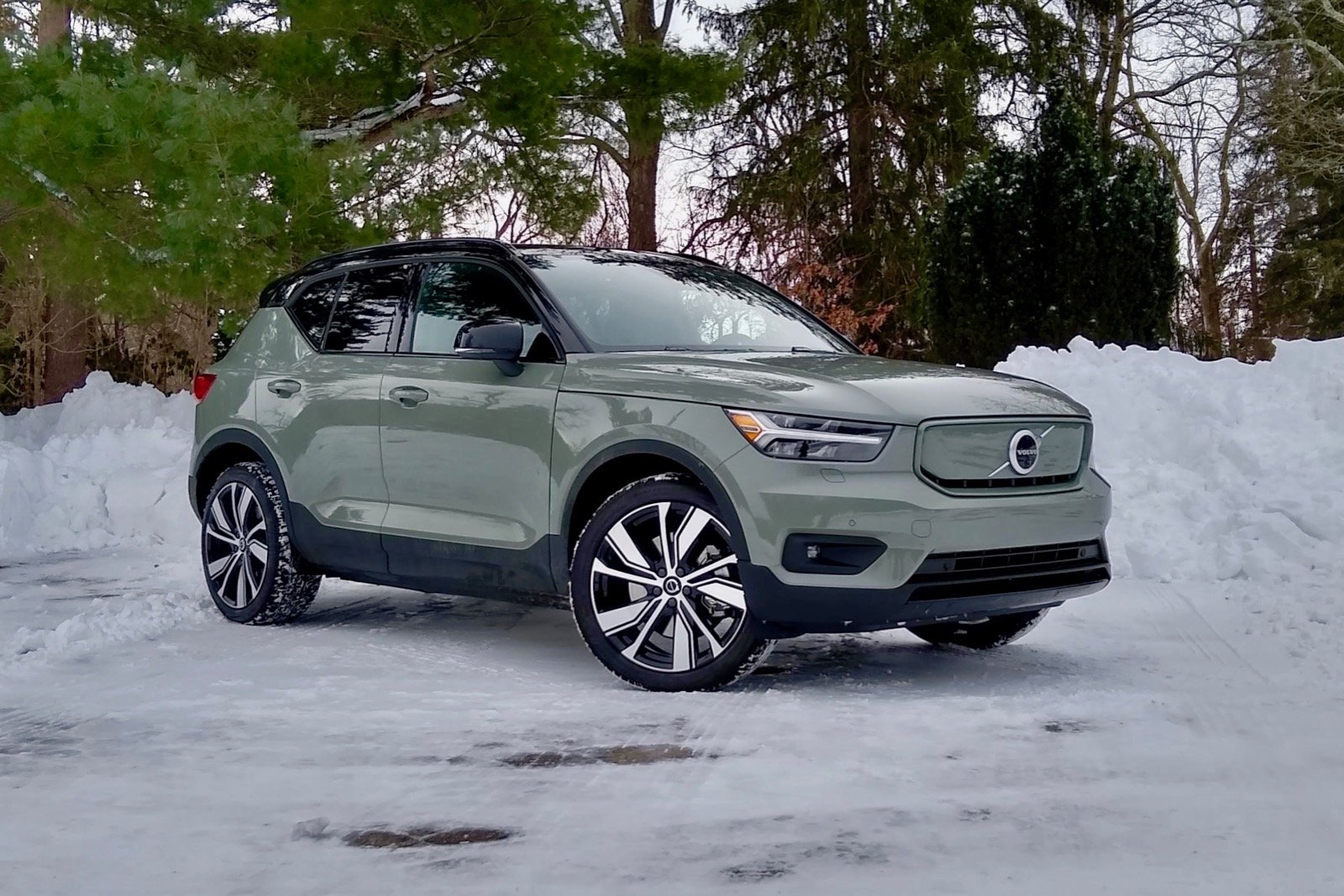
According to CarGurus experts, the overall rating for the 2020 Nissan Rogue is 6.0 out of 10, while the 2021 Volvo XC40 scores 8.0 out of 10. Based on these ratings, the 2021 Volvo XC40 is the clear recommendation, offering superior performance, advanced technology, and higher safety ratings.
Choose the 2020 Nissan Rogue if:
- You prioritize a lower purchase price.
- You need a vehicle with a spacious cargo area.
- You prefer a straightforward, easy-to-use vehicle.
Choose the 2021 Volvo XC40 if:
- You value a premium, minimalist interior with high-quality materials.
- You want advanced technology features, including Google integration and OTA updates.
- You seek a vehicle with top safety ratings and comprehensive safety features.
CarGurus highlights

According to CarGurus experts, the overall rating for the 2020 Nissan Rogue is 6.0 out of 10, while the 2021 Volvo XC40 scores 8.0 out of 10. Based on these ratings, the 2021 Volvo XC40 is the clear recommendation, offering superior performance, advanced technology, and higher safety ratings.
Choose the 2020 Nissan Rogue if:
Shop Now- You prioritize a lower purchase price.
- You need a vehicle with a spacious cargo area.
- You prefer a straightforward, easy-to-use vehicle.
Choose the 2021 Volvo XC40 if:
Shop Now- You value a premium, minimalist interior with high-quality materials.
- You want advanced technology features, including Google integration and OTA updates.
- You seek a vehicle with top safety ratings and comprehensive safety features.

By: CarGurus + AI
At CarGurus, our team of experienced automotive writers remain at the heart of our content operation, conducting hands-on car tests and writing insightful guides that are backed by years of industry experience. To complement this, we are harnessing AI to make our content offering more diverse and more helpful to shoppers than ever. To achieve this, our AI systems are based exclusively on CarGurus content, ratings and data, so that what we produce is both unique to CarGurus, and uniquely helpful to car shoppers.
